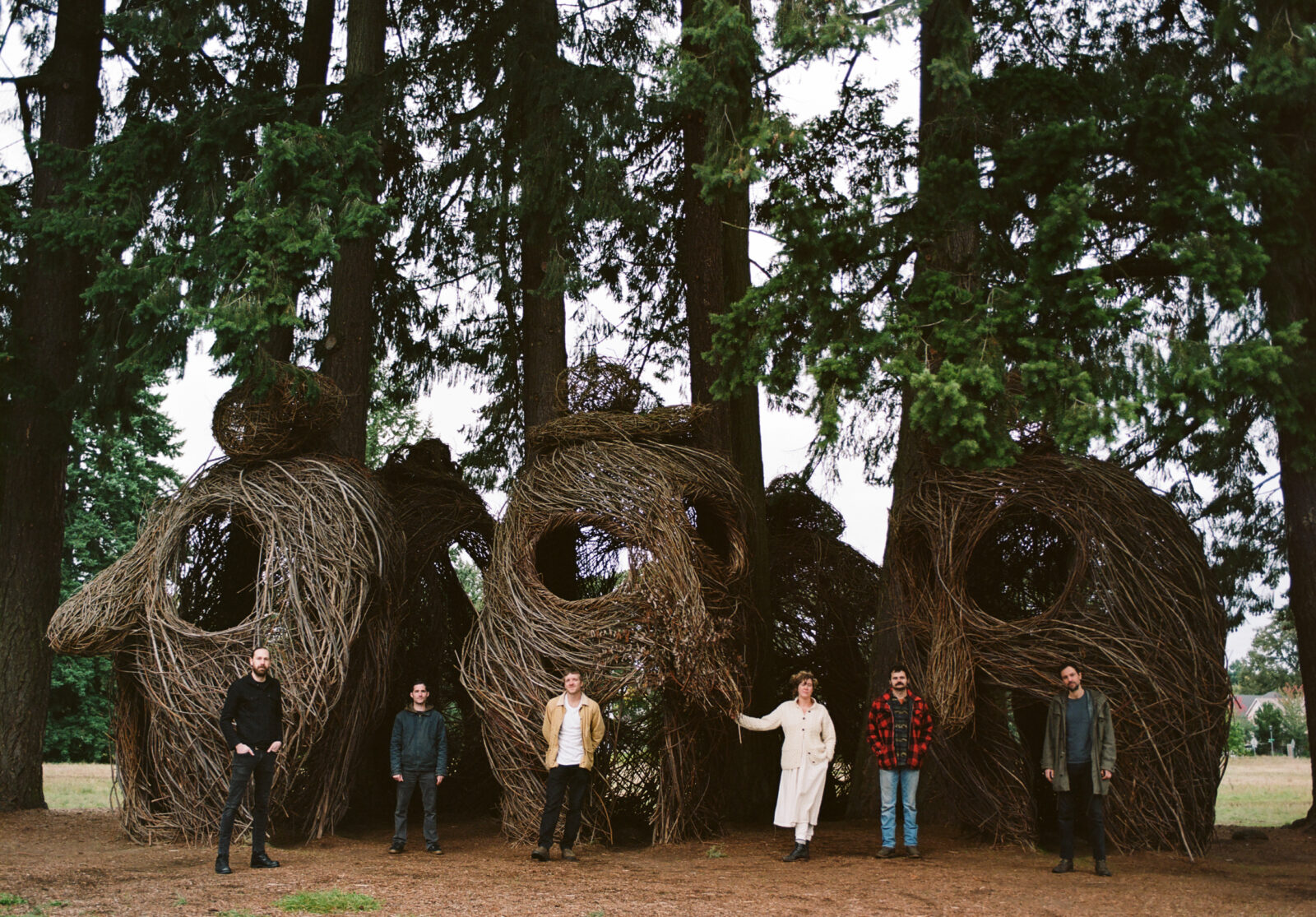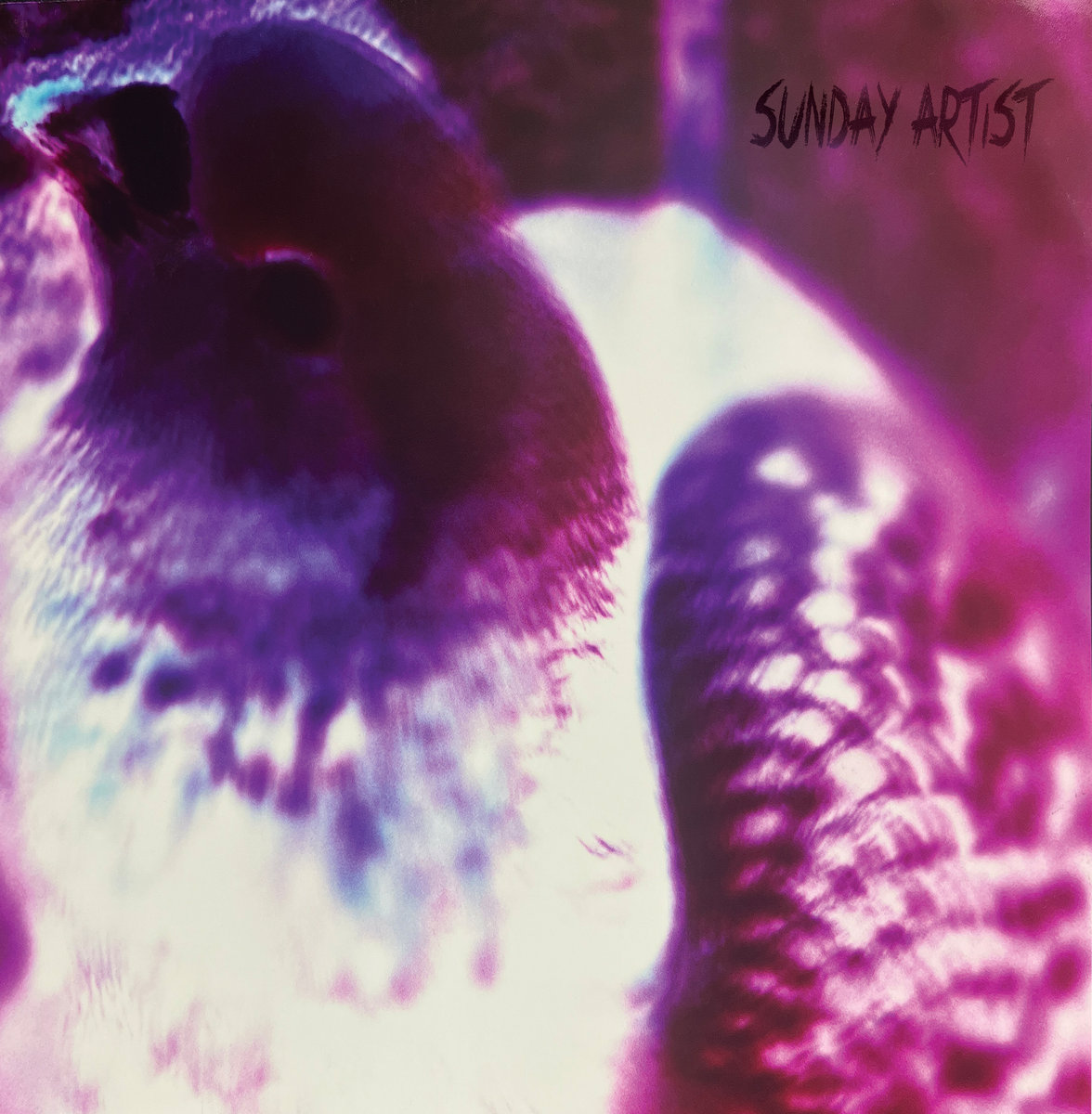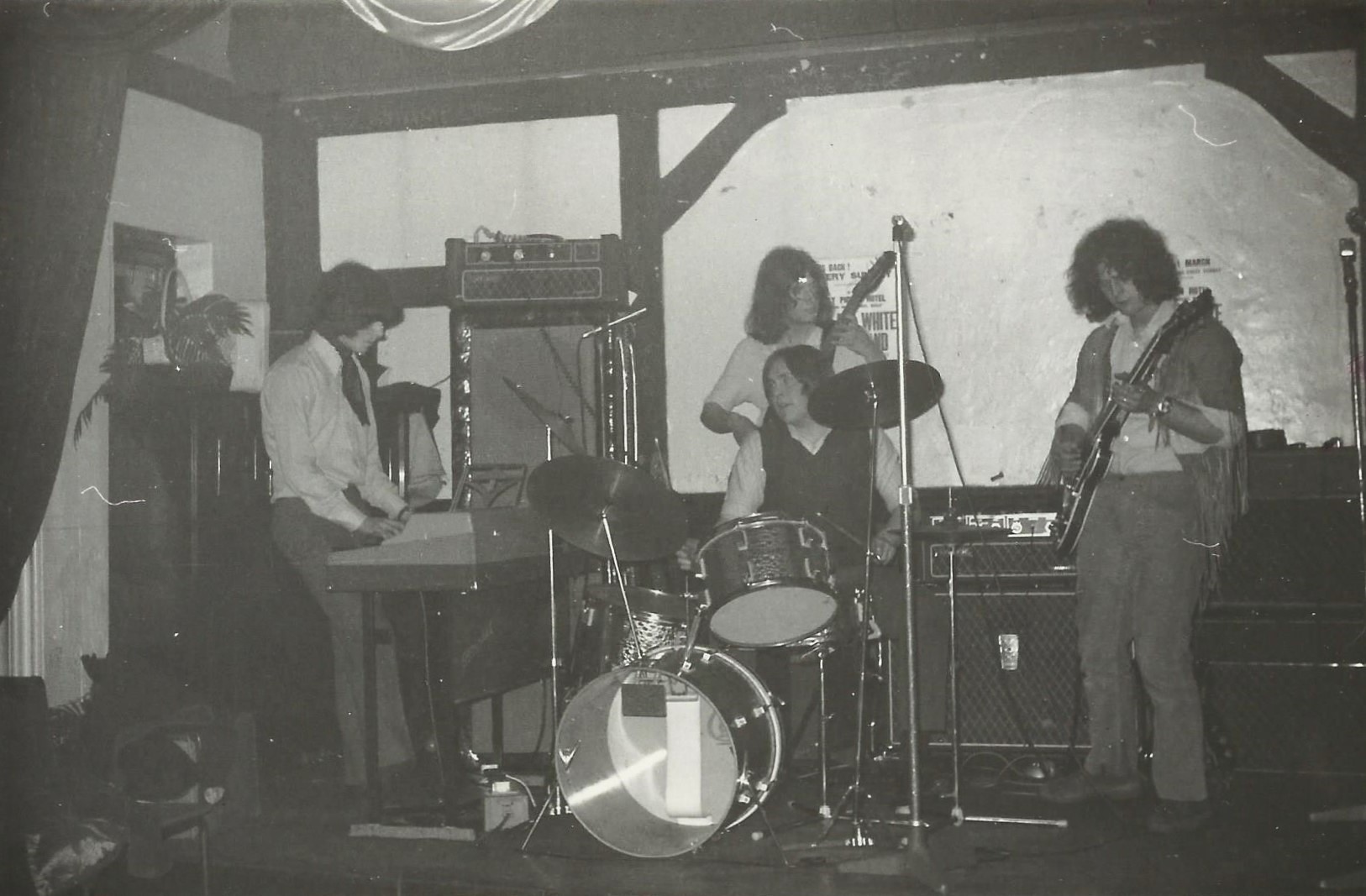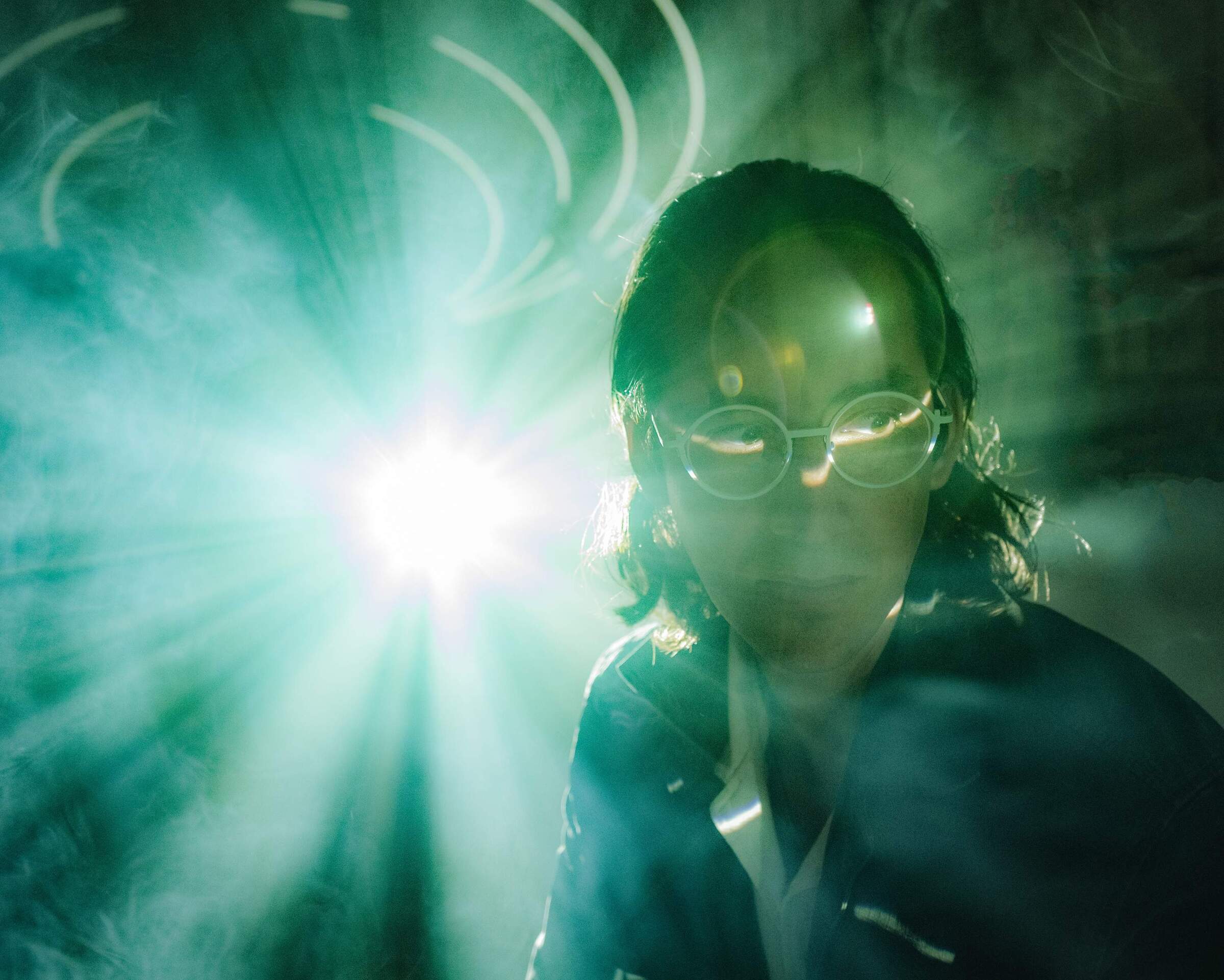Abronia | Interview | “Our third album is at the pressing plant right now”
Abronia are experimental psych six piece based in Portland, Oregon USA. Two guitars, pedal steel, tenor saxophone, bass, and one 32” inch bass drum.
The follow up to their debut, ‘The Whole of Each Eye’ sees Abronia cementing its very singular place in the canon of the broader psych rock universe. The sound, with its ample use of lap steel and reverb-heavy electric guitar, is firmly rooted in a sun-baked strain of Americana. But never too far from the surface are elements of European art rock in all of its guises (krautrock, psychedelia, prog) and a welcome wild card in the form of Keelin Mayer, who adds a Stooges-like squall with her saxophone and composed vocal turns à la Nico or former Swans singer Jarboe.
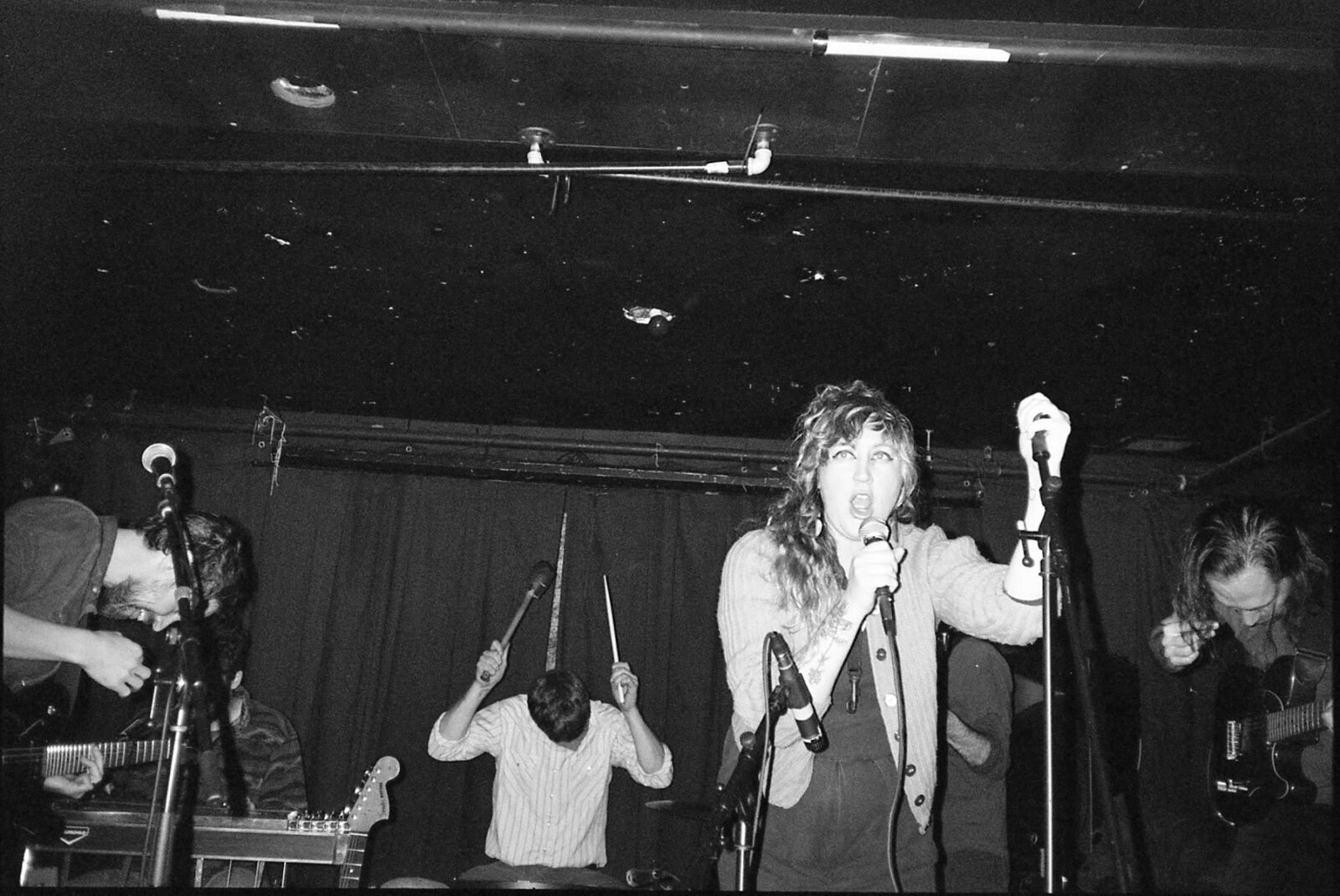
“I could see one big drum and people set up around it with guitars strapped on and big amps behind them”
Would you like to talk a bit about your background?
Eric Crespo: I play guitar in Abronia. I’ll try to speak for the group here as best I can. Abronia consists of Keelin Mayer, Paul Michael Schaefer, Rick Pedrosa, Shaun Lyvers, Shaver and myself.
Keelin grew up in Chicago. Paul grew up in rural Minnesota outside of Minneapolis. Rick grew up in Maryland. Shaun grew up in Pensacola, Florida. Shaver grew up in the DC suburbs of Northern Virginia. I grew up in Burlington, North Carolina. Everyone started playing in bands when they were teenagers.
We mostly all met in Portland over the years. Keelin lived in Portland in the early 2000’s and I think I met her when I played a show in her basement. She moved away from Portland a few years after that and moved back to Chicago for a while and lived in Baltimore for a spell. While Keelin was back in Chicago she played in a few different bands with Shaver. She moved back to Portland eventually and Shaver moved here a short time later. I asked Keelin if she wanted to try playing saxophone for this new project I was trying to form–turns out she did and she brought Shaver into the fold and got him interested in playing the big drum. Oh, and I played in a short-lived band with Shaun called Centers many years ago.
We formed Abronia in late 2014 and played our first show in April of 2015.
How did you decide to form this project?
I was on a backpacking trip in Southeastern Utah in May of 2014 and I woke up with this mental picture of what would later become Abronia in my head. I could see one big drum and people set up around it with guitars strapped on and big amps behind them. There was also a pedal steel or a lap steel player, and a horn player or two. I drew a sketch of it in my notebook.
I set about trying to put it together shortly after returning to Portland from that trip. I bought a thirty-two inch marching band drum before I knew who was going to play it.
I always wanted the band to be a very collaborative thing even though I was the one who thought it up. I’m over the moon that it has indeed become that way. It’s become better than I ever imagined, and the people involved are a real dream team.
I first got in touch with your music through ‘The Whole Of Each Eye’, but I’m also familiar with ‘Obsidian Visions / Shadowed Lands’. Would you like to take a few moments and share what are some of the main differences between those releases?
The main difference is probably that three of the six people who played on ‘Obsidian Visions’ were no longer in the band by the time we recorded ‘The Whole of Each Eye’. The lineup changes didn’t happen all at once though so it never felt like a huge upheaval. Rick started playing with us on pedal steel right after we finished recording ‘Obsidian Visions’. He replaced Andrew Endres who played lap steel on ‘Obsidian Visions’. That’s another difference–that’s lap steel you hear on ‘Obsidian Visions’ and pedal steel on ‘The Whole of Each Eye’.
Almost a year after Rick joined the band Paul replaced Ben on guitar, and then maybe six months or so after that Amir went wondering and Shaun replaced him on bass.
It all felt pretty natural and none of the lineup changes threw any major wrenches in our plans. And there’s no bad blood with any of our former members–it was just time constraint stuff, or them not being in town anymore.

So that’s the cut and dry membership data for you, but besides that it seems like the first album was sort of figuring what we were going to create as a band. We were drawing from the initial vision I had for the band, but also learning how to work together as a cohesive unit and tweak the details to favor everyone’s strengths.
The first music I remember presenting to the band was this really complicated drawn out piece with a lot of disparate parts. Thankfully the rest of the band sort of reined me in there, and said, “Hey I think we can just take that part and make a song out of that, and take that part and make another song,” and so on. I think there are three different songs on that first album that were taken from what I first conceived of as being separate movements of one long piece. If I had gone ahead with that piece it would’ve collapsed from its own weight. I don’t think it would have worked.
Another thing: Initially I pictured the band being entirely instrumental. Keelin decided she wanted to try singing a bit when we were writing the first album and everybody knew that was a good idea as soon as she started doing it. But about half of our first album is instrumental. There are zero purely instrumental songs on ‘The Whole of Each Eye’. She’s become really crucial to our band as a singer and a saxophone player, even though the reason I was seeking her out in the first place was for saxophone playing. A real unexpected two for one special there.
“A sense of open space and balancing out any clutter with minimalism”
It seems that you really took a lot of time to ‘The Whole Of Each Eye’ as it is a really complex album. Can you share some further words about it?
I think writing and recording ‘Obsidian Visions’ made us conscious of the raw musical building materials that we were working with, as far as the tones of the instruments and the individual strengths and limitations of everyone involved. We didn’t intentionally set out to make something more complex than our first album, but it just sort of went that way naturally. We were conscious going into the writing that we didn’t want to repeat ourselves, but we were also aware that we didn’t want to deviate too far from the initial vision that was established on the first album.
We got pretty deep into the writing process and I think it was fulfilling for everyone to really examine the nuts and bolts of everything and to nerd out a bit on the arrangements. We’re a six piece and everyone contributes ideas, and it seems like by the second album people were starting to feel more comfortable about weighing in. Having six people in the room writing together creates a lot of ideas that fly around, and you try them out and you see what works and what doesn’t work. If you incorporate even a fraction of those arrangement ideas that are getting thrown around into the songs then things can get complex pretty quickly.
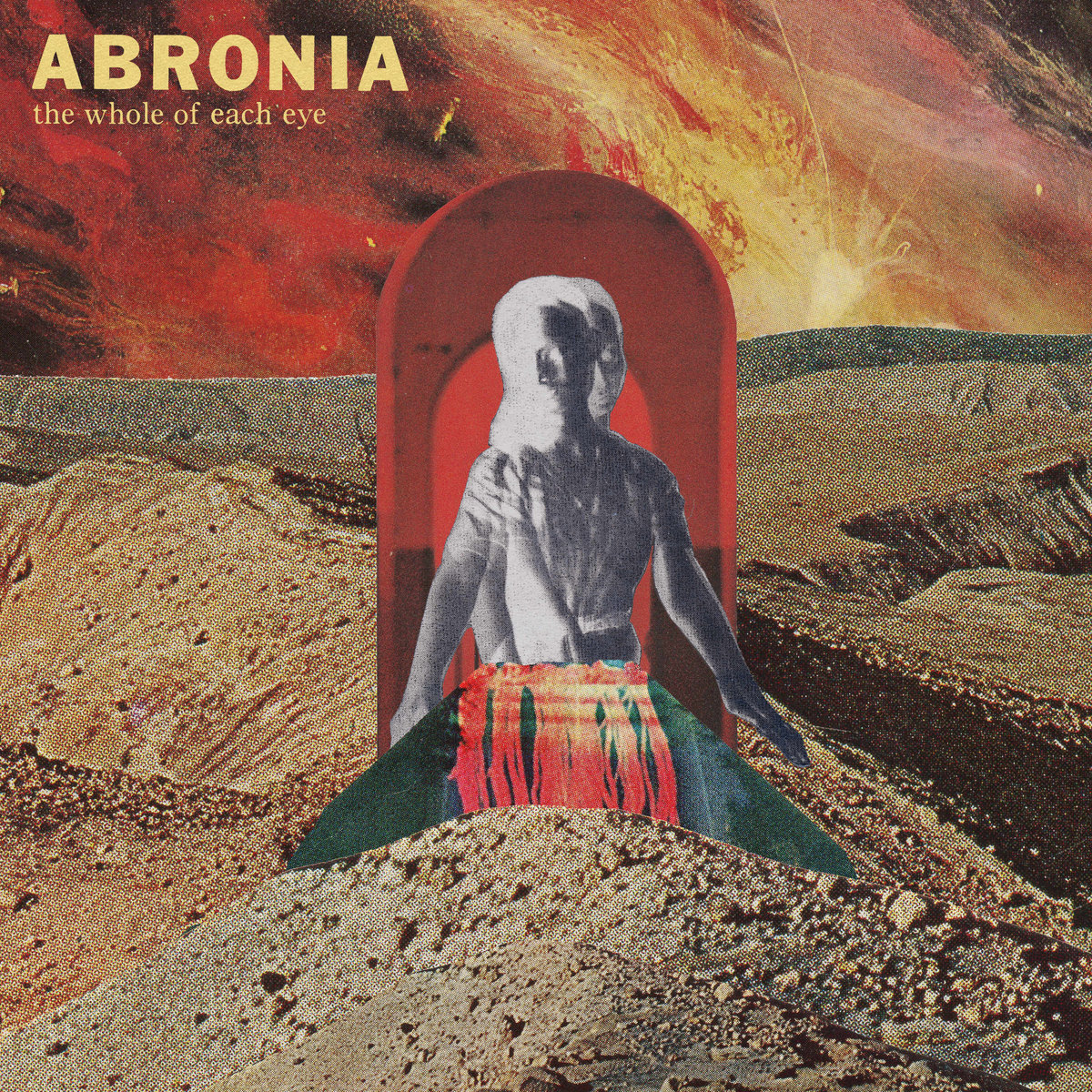
I find it super satisfying when I bring in a riff or something to the band and someone makes a suggestion for where to take it that I never would have come up with in a million years, and it makes the song so much more interesting, or tweaks the vibe in just the right way.
As seemingly complex as the arrangements sometimes get though, we do always try to be mindful about keeping a sense of open space and balancing out any clutter with minimalism.
What’s that cover artwork about? I love it.
Hey thanks! That was a joint effort between all six of us. We all sat around in a room going through old magazines and books together and we made that collage. Shaver took care of the final layout, but the basic collage we made together as a band. For the record, Rick is probably the one in the band who is the most skilled at cutting the pictures out of the magazines with an x-acto knife.
It’s much easier for us to reach a consensus on the music that we make than on things like artwork, fonts, press photos, and album names. It’s comical how much back and forth there is about that kind of stuff. Hardly ever are all six of us ecstatic about an album cover or album name or whatever. If we can get something together where no one gives a “hard no,” then that ends up being the one we go with. We had some other options for covers but the one you see ended up being the one where no one gave a “hard no.”
Also I think why we ended up doing it together is because no one could agree to green light any one person’s idea about how to approach the cover art. We couldn’t all agree on an outside artist to use or anything.
What the image is actually about I can’t exactly say, but it definitely seems to dwell in the same dimension as the music. There wasn’t a ton of discussion about the meaning behind the image–I think it just felt right.
In this band we have six people with (what I consider to be) very good taste deciding together what makes it out into the world. At this point I’ve come to trust that whatever makes it through our gauntlet of filters and criticism contains some kind of truth or ineffable substance that’s going to resonate.
How would you describe your sound?
How we describe our sound to people comes up quite often as a topic of conversation at practice. We haven’t settled on a go yet.
One of my least favorite human interactions is when someone who has no knowledge or interest in the musical underground finds out I play in a band and asks, “Oh what kind of music do you play?” I clam up. I have a very hard time. It’s silly because it really doesn’t matter what I say–most of the time they’re just making conversation.
I was just reminded of a great story of legend in our band concerning the description our sound:
A few years ago we were waiting around in Eugene at this bar we were going to be playing later that night. We had just loaded in and we’re sitting around surrounded by all our gear when this blue collar looking middle-aged guy walked up to us–he was a random guy who was there drinking, not there for the show. So he walks up and asks, “What kind of music do you guys play?” Without missing a beat, our guitar player Paul very confidently states, “Rock. Straight up.” The guy looks deeply at Paul and gives a very approving nod and returns to his pool game or whatever. It was a nearly perfect interaction between two strangers.
In that circumstance it was exactly the right way to describe our band.
I think part of my struggle in describing the sound is in thinking about the accuracy in any description–a certain description that seems accurate to me might not be accurate to someone else. It’s extra hard when you don’t know the reference points and musical vocabulary of the person you’re talking to. If you throw out a bunch of esoteric reference points then you risk coming off as a highfalutin jerk. *Pushes glasses up on nose* “Oh you mean you’ve never heard ANY spiritual free jazz recordings from the 1960’s!?”
I don’t actually think someone needs to possess a deep esoteric musical knowledge in order to enjoy our music, but what do I know? I’m too close to it to be able to say that with confidence.
I guess I’d rather not have to describe it at all, but if pressed I’d have to say:
Rock. Straight up.
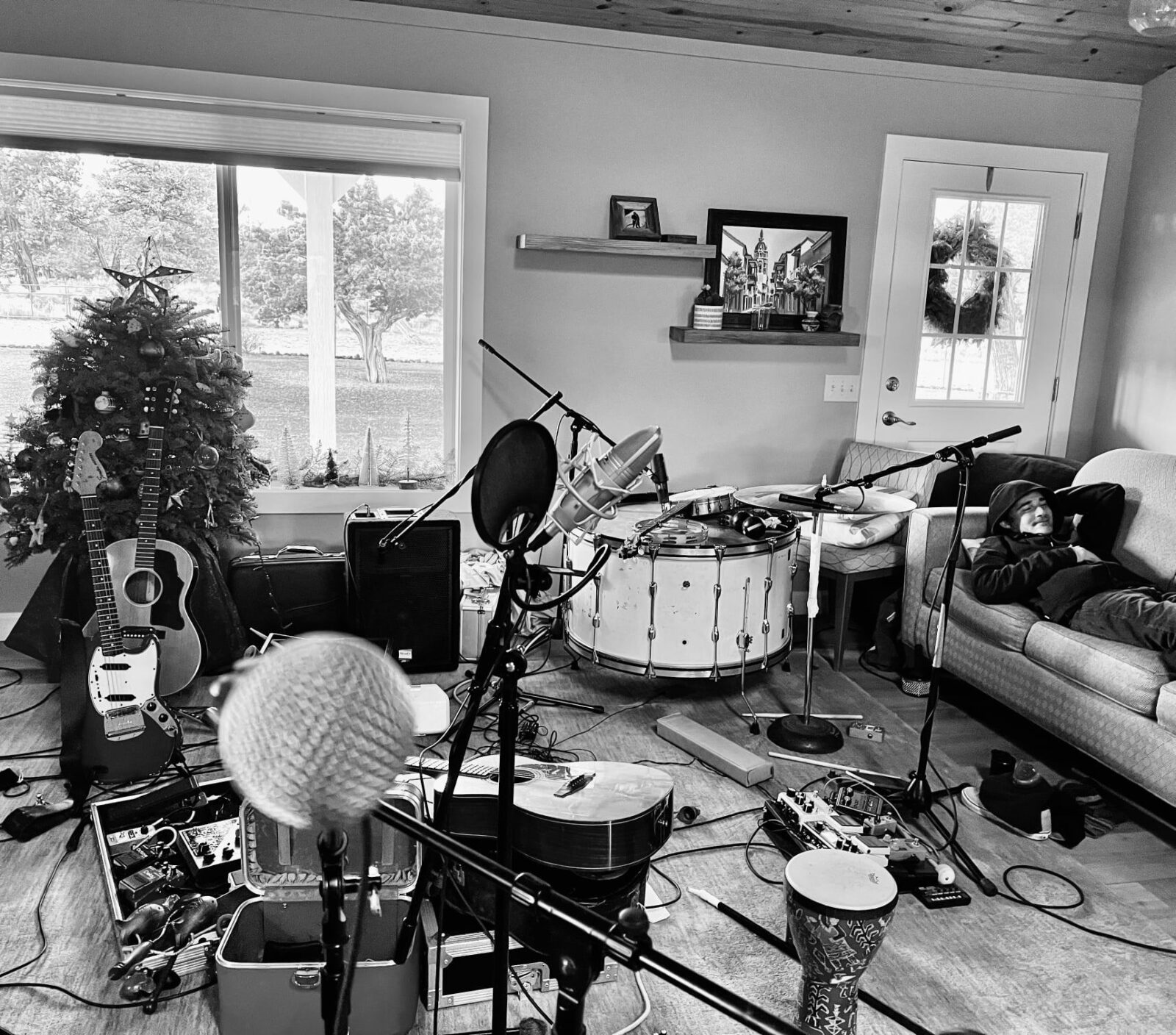
What does the name “Abronia” refer to in the context of the band name?
I was reading something about the flowers that grow in Southeastern Utah while I was down there and I came across the word Abronia. It was the genus of a flower that I had encountered in the area called the sand verbena. It’s not the most notable or striking of the desert flowers, but I liked how the word looked and how it sounded and I liked that it had some tie to the place where I thought up the concept of the band.
Later I found out that Abronia is also a genus of supposedly ornery lizards that are native to Southern Mexico and northern Central America.
Choosing the band name was the beginning of the now familiar scenario where no one gave a “hard no,” and no one came up with anything better!
It’s hard to find a band name that’s not already taken, you know.
Are any of you involved in any other bands or do you have any active side-projects going on at this point?
Rick plays in the band Federale and has a solo recording outlet called The Far Sound. Shaver plays sometimes with our former bass player Dewey Mahood in Plankton Wat. He might still play with Million Brazilians sometimes as well, though the other members now live in Maine. Paul has his solo project, The Institute For Creative Dying and plays in Yardsss (at least prior to the pandemic he did). I’m recording solo stuff, but I’m keeping it under my hat at the moment.
How do you usually approach music making?
Usually, but not always, I’ll bring in a loose concept or a riff to start something new. I’ve learned not to bring in anything that’s too set in stone, because it’s going to get changed somehow. We tend to improvise or jam on a certain idea or section and then try to put the different sections together in various ways and nail down parts. That’s usually how we’ve done it, but it can go down differently than that as well.
What are some bands/musicians that have a big influence on you?
It’s overwhelming to think of all the things everyone in the band could name. I sent all these interview questions to everyone in the band to see if they wanted to give any answers but I haven’t heard back.
So I don’t want to name any bands/musicians, not for any kind of desire for secrecy, but because I don’t want to risk the ridicule for naming something someone doesn’t approve of or for leaving something crucial out. And I don’t want to speak for only myself because if I do that I’d be leaving out 5/6 of the story.
I will say that all six of us have a pretty wide taste range and where one person’s knowledge of a particular genre might be lacking, rest assured there’s someone else in the band that can kind of fill in those gaps. You could probably name just about anything from the history of recorded music and at least one person in the band would be at least slightly familiar with it.
What are some future plans?
Well our third album is at the pressing plant right now. It’s funny that I’ve been discussing our second album, when this third one that we’ve just finished is so fresh in my mind.
But we don’t even have a release date set yet, so I’ve gotta keep my excitement in check for a little while longer. I know that it should be out by late spring, and we’re supposed to tour Europe at the beginning of July.
Also just before Christmas we spent three nights at a house in the Oregon high desert recording a bunch of improv stuff onto a cassette eight track machine. We filled up twelve tapes. We need to figure out what’s on those cassettes and see if there’s anything that we deem to be worthy of releasing. We’ll be sorting through all of that and editing for the next few months.
How important is improvisation for you?
It’s important, especially as a writing tool. Speaking for the material we’ve released into the world at this point, there are parts of songs that are somewhat improvised, but for the most part everything is pretty well composed–even if it doesn’t sound like it.
As mentioned above though improvisation was deemed important enough for us to devote an out of town recording retreat towards the endeavor of documenting us improvising together.
Let’s end this interview with some of your favorite albums. Have you found something new lately you would like to recommend to our readers?
Lemme just say how much I love all you do at “It’s Psychedelic Baby”–the deep dives into forgotten treasures of the psychedelic era has turned me onto a lot of excellent stuff.
The one that comes to mind first is ‘Anadolu Pop’ by Moğollar. What an album! I somehow don’t remember ever coming across that one until seeing it on your site recently. So readers…If you missed that one, check it out.
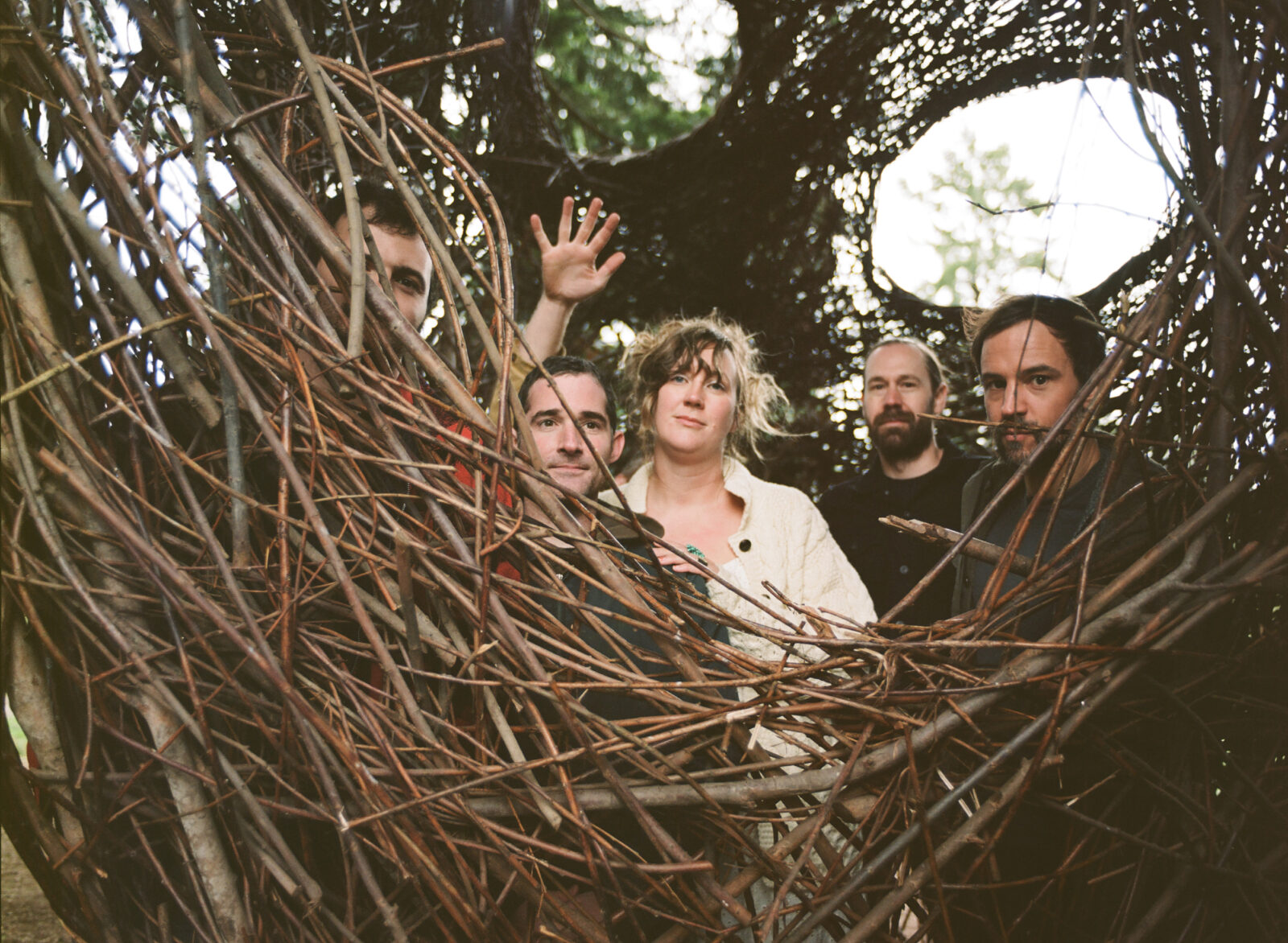
Thank you. Last word is yours.
Thank you for making It’s Psychedelic Baby! Magazine. It’s a special treat. Please keep doing it for as long as you can manage! Hope to meet you in person over in Europe one day.
Klemen Breznikar
Abronia Facebook / Instagram / Twitter / Bandcamp
Cardinal Fuzz Records Facebook / Twitter / Bigcartel / Bandcamp
Feeding Tube Records Official Website / Facebook / Instagram / Twitter / Bandcamp
Halfshell Records Facebook / Instagram / Bandcamp
Water Wing Records Official Website / Facebook / Bandcamp
Resurrection Records Official Website / Facebook / Instagram / Twitter / Bandcamp / YouTube
Reverb Worship Official Website / Facebook / Instagram / Twitter

